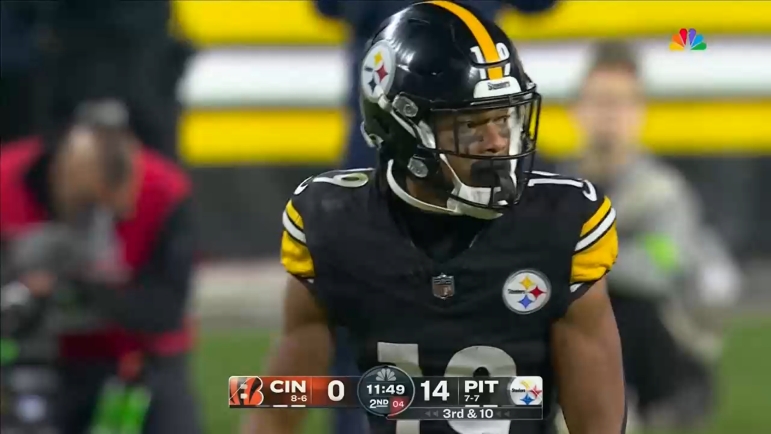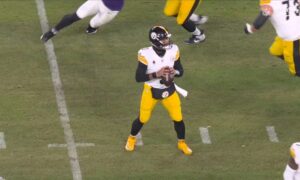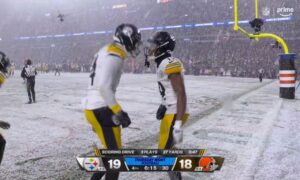Player: WR Calvin Austin III
Stock Value: Up
Reasoning: With the Steelers trading Diontae Johnson, Calvin Austin III looks much more important—for now. The room only carries over George Pickens from last season, currently, with Johnson, Allen Robinson II, and Miles Boykin gone. While they signed a couple of veterans, neither addition is one that much moves the needle. However, there is plenty of time left in the offseason to make a significant move or two.
Following a rookie season spent on the Reserve/Injured List, Calvin Austin III just wanted to contribute last year. And he began his first full year in the league on the waiting list, at least as far as depth charts go.
The Steelers brought Diontae Johnson, George Pickens, and Allen Robinson II into the year as their top three wide receivers. Austin had to fight for whatever scraps he could get, though he seized upon an early break.
Johnson suffered an injury in the opener that kept him out for a month. In his second game following that injury, he snagged a 72-yard pass for his first career touchdown. It seemed to validate everything the Steelers saw in the undersized his-round Memphis speedster.
If only he or they had been able to sustain that. The next time Kenny Pickett looked for Austin deep on that play, the defense intercepted it. Indeed, he never recorded 20 or more receiving yards in a game for the rest of the year.
After an opening game in which he caught all six targets, Austin never caught more than three passes in any one game, and he managed even that just once. But the way things are shaking out, he could have a bigger role this year.
They released Robinson as a salary cap casualty, and then they drafted Johnson. If the season started today, he may be the second receiver being Johnson. The Steelers did sign veterans Van Jefferson and Quez Watkins, but if he’s the player they expect him to be, he needs to be them and secure his spot on the depth chart.
As the season progresses, Steelers players’ stocks rise and fall. The nature of the evaluation differs with the time of year, with in-season considerations being more often short-term. Considerations in the offseason often have broader implications, particularly when players lose their jobs, or the team signs someone. This time of year is full of transactions, whether minor or major.
A bad game, a new contract, an injury, a promotion—any number of things affect a player’s value. Think of it as a stock on the market, based on speculation. You’ll feel better about a player after a good game, or worse after a bad one. Some stock updates are minor, while others are likely to be quite drastic, so bear in mind the degree. I’ll do my best to explain the nature of that in the reasoning section of each column.








